March 23, 2018 in Russia, the last major open-hearth furnace was stopped. Now you can see steel smelting in Maarten of such magnitude only in photos. Therefore, we sent our best photographer to the last fusion, and now we want to share this beauty with you. Update: now with explanations!
So the metal boils at a temperature of about 1530-1550 degrees Celsius. To facilitate the release of harmful impurities are often used by blowing argon from the bottom. All signatures provided by GdalexIn Vyksa, the first open-hearth furnace was built in 1892 on the territory of the Nizhne-Vyksa plant.
 Stand with the current melting number (usually 07 is the furnace number, 3 digits is the melting sequence number)
Stand with the current melting number (usually 07 is the furnace number, 3 digits is the melting sequence number)The introduction and development of open-hearth production in Vyksa immediately gave 40% growth in steel production.
 The charging flap is open. It can be seen as a flame escapes.
The charging flap is open. It can be seen as a flame escapes.The capacity of the steel-smelting shop, which consists of two open-hearth furnaces, a complex of secondary treatment and casting of steel, was 500 thousand tons of steel per year.
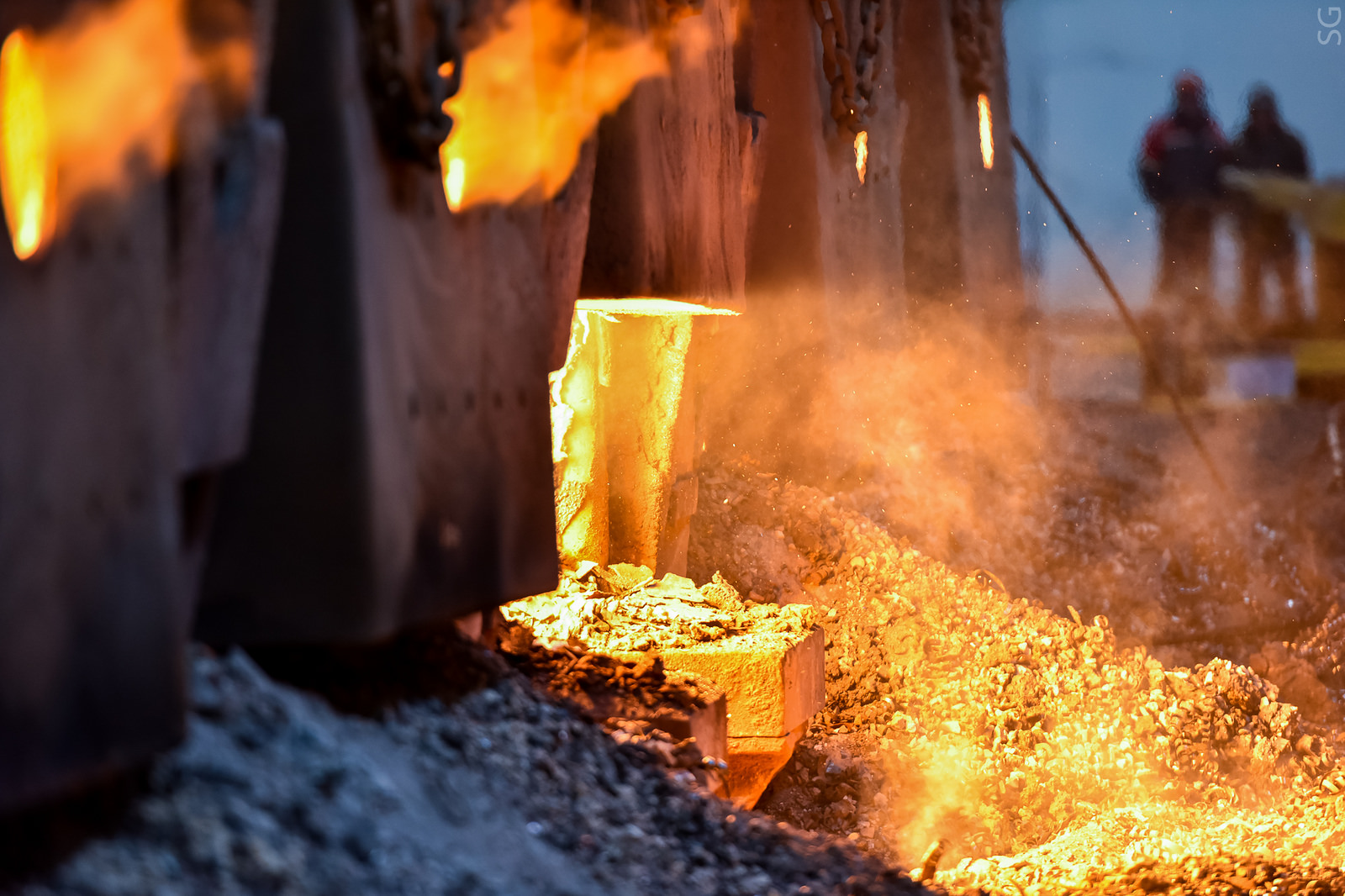 Same as in the previous photo, but from a different angle.
Same as in the previous photo, but from a different angle. The element of fire inside the furnace.
The element of fire inside the furnace.Now the Vyksa Steel Works is a part of the United Metallurgical Company, OMK Joint-Stock Company.
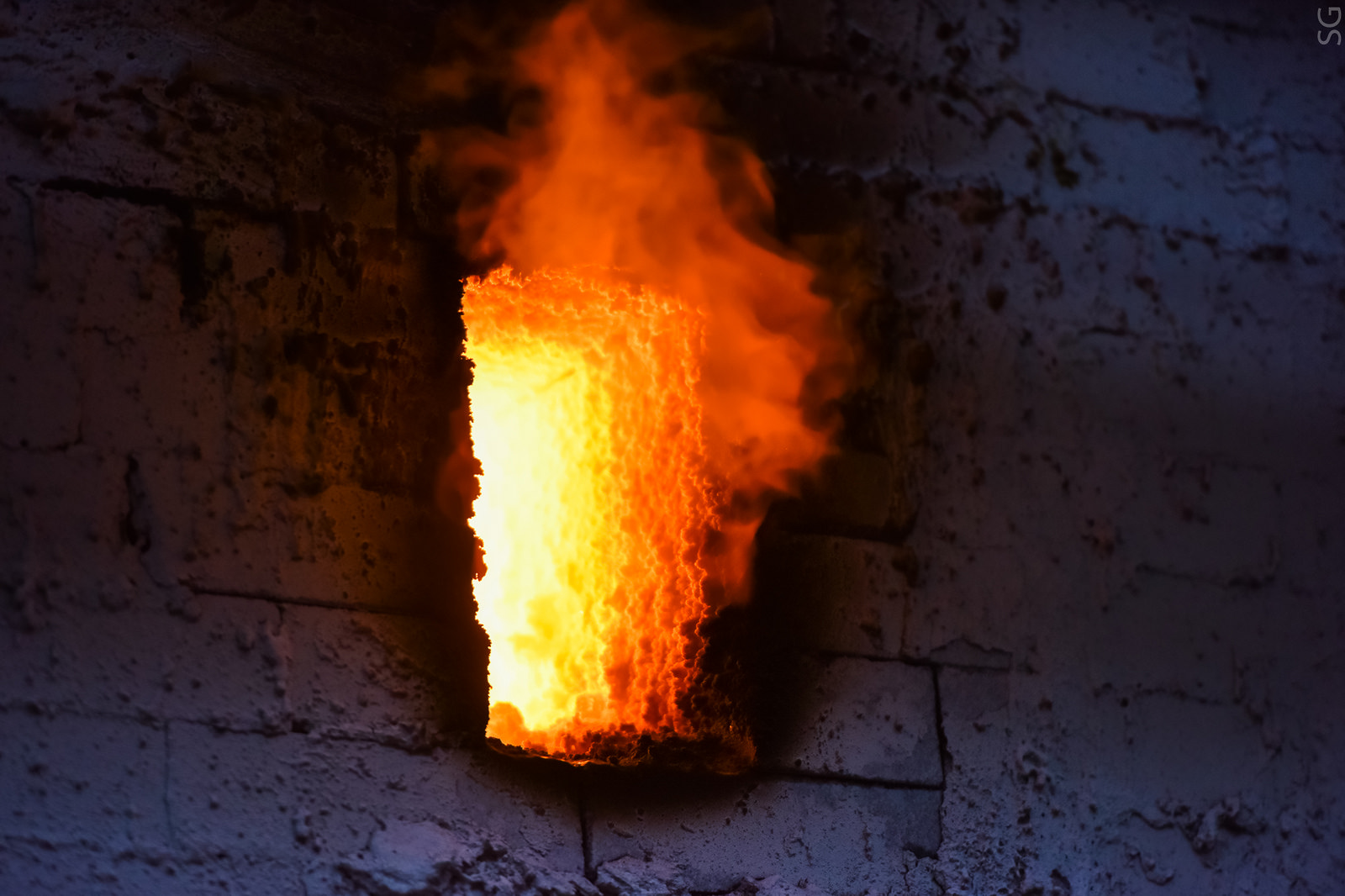 Viewing window in the furnace.
Viewing window in the furnace.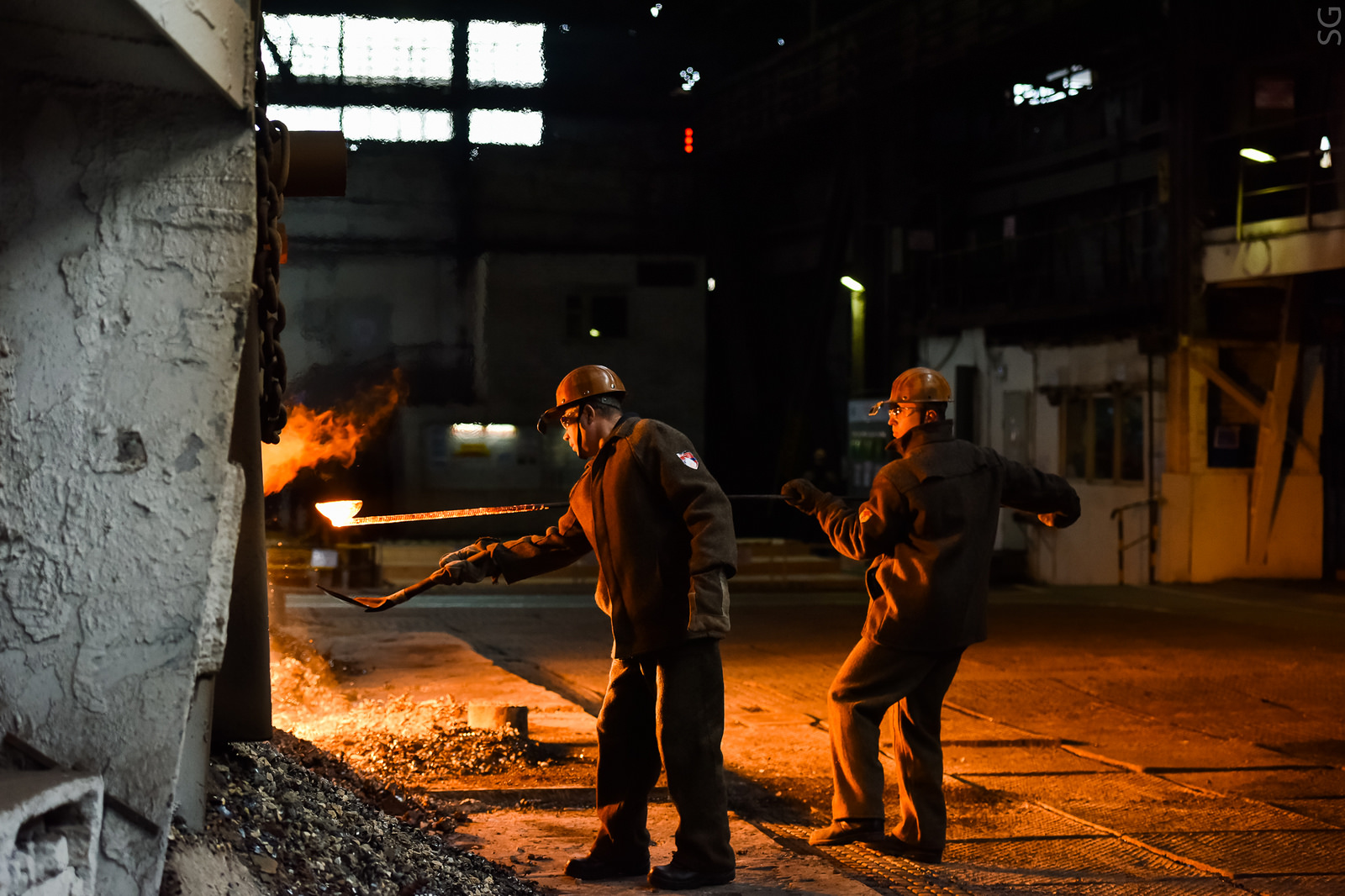 Sampling of metal for chemical analysis.
Sampling of metal for chemical analysis. Same as previous photo. The metal crystallizes in the laboratory.
Same as previous photo. The metal crystallizes in the laboratory.The company’s management decided to shut down the steel plant, because OMK switched to more modern steelmaking technologies.
 The steelmaker watches the charging flap close.
The steelmaker watches the charging flap close. Manual filling of additives (apparently coal).
Manual filling of additives (apparently coal).Stopping the shop will reduce the burden on the ecology of Vyksa and its environs 10 times.
 Pouring finished steel into the ladle.
Pouring finished steel into the ladle.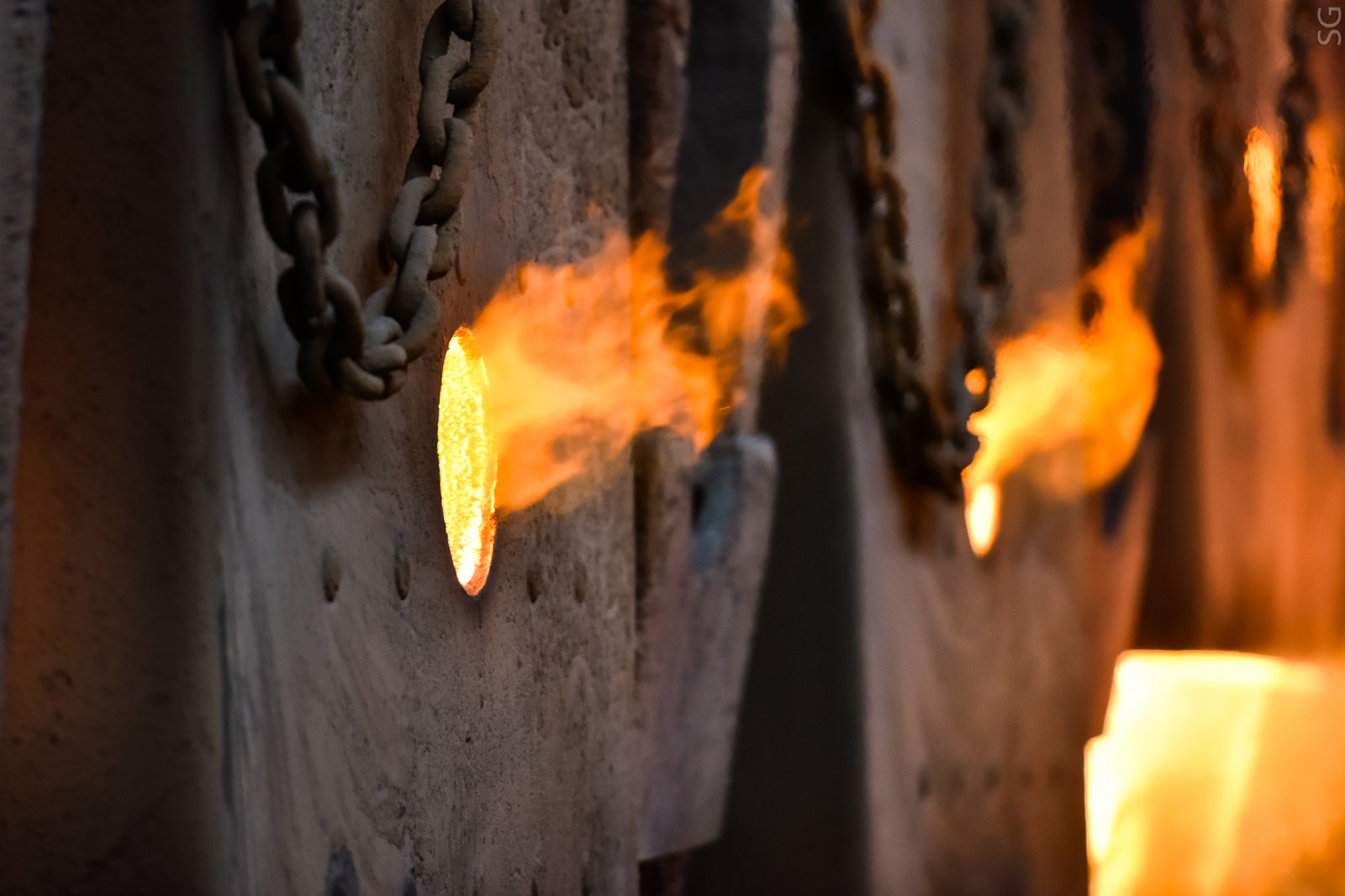 Again the elements of fire.
Again the elements of fire.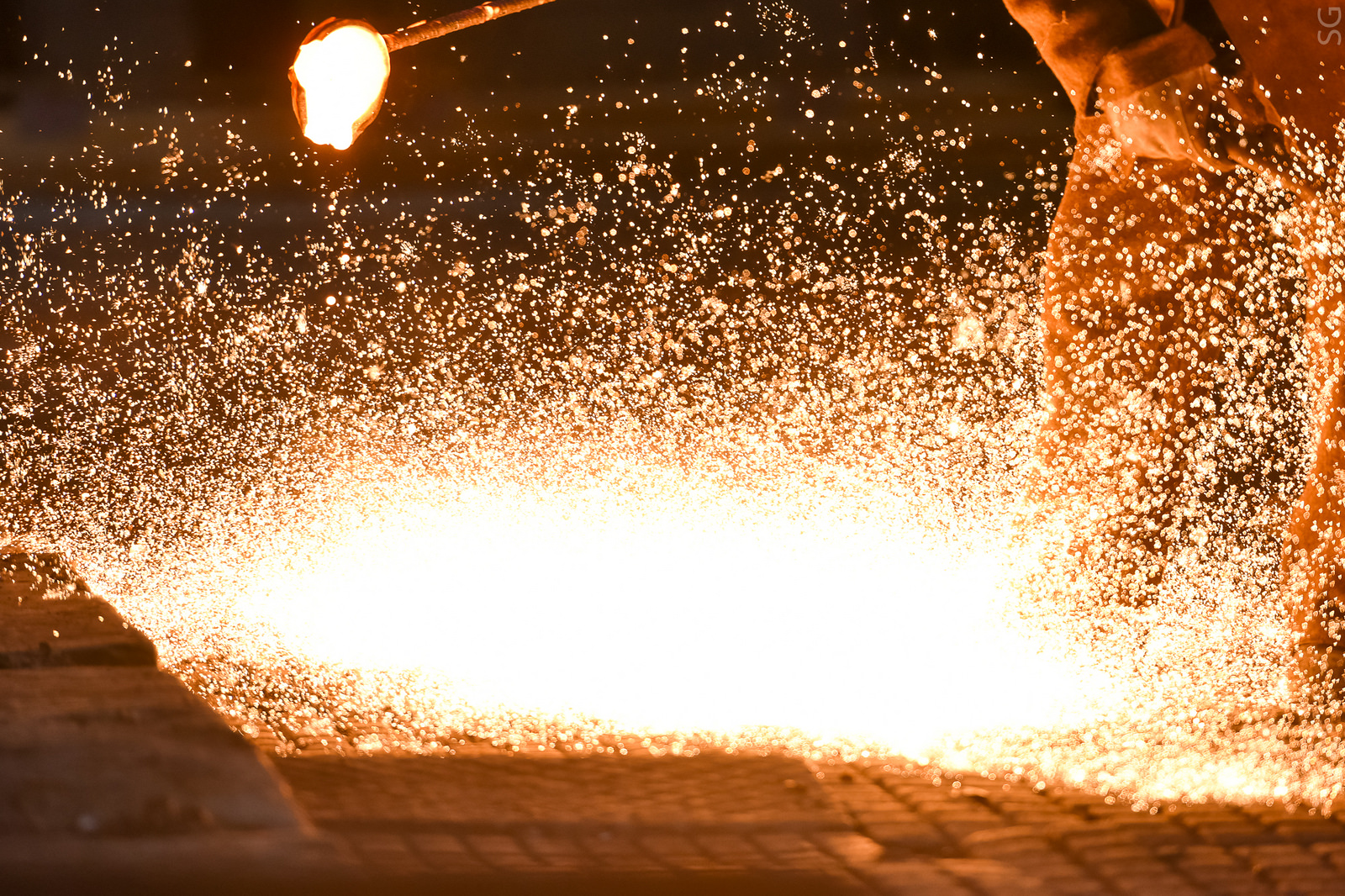 Another sample.
Another sample.All employees of the closing workshops will be retrained to work in other workshops of the enterprise, including in the newly opened casting and rolling complex, as well as in the new pipe workshop, which is being completed in Vyksa.
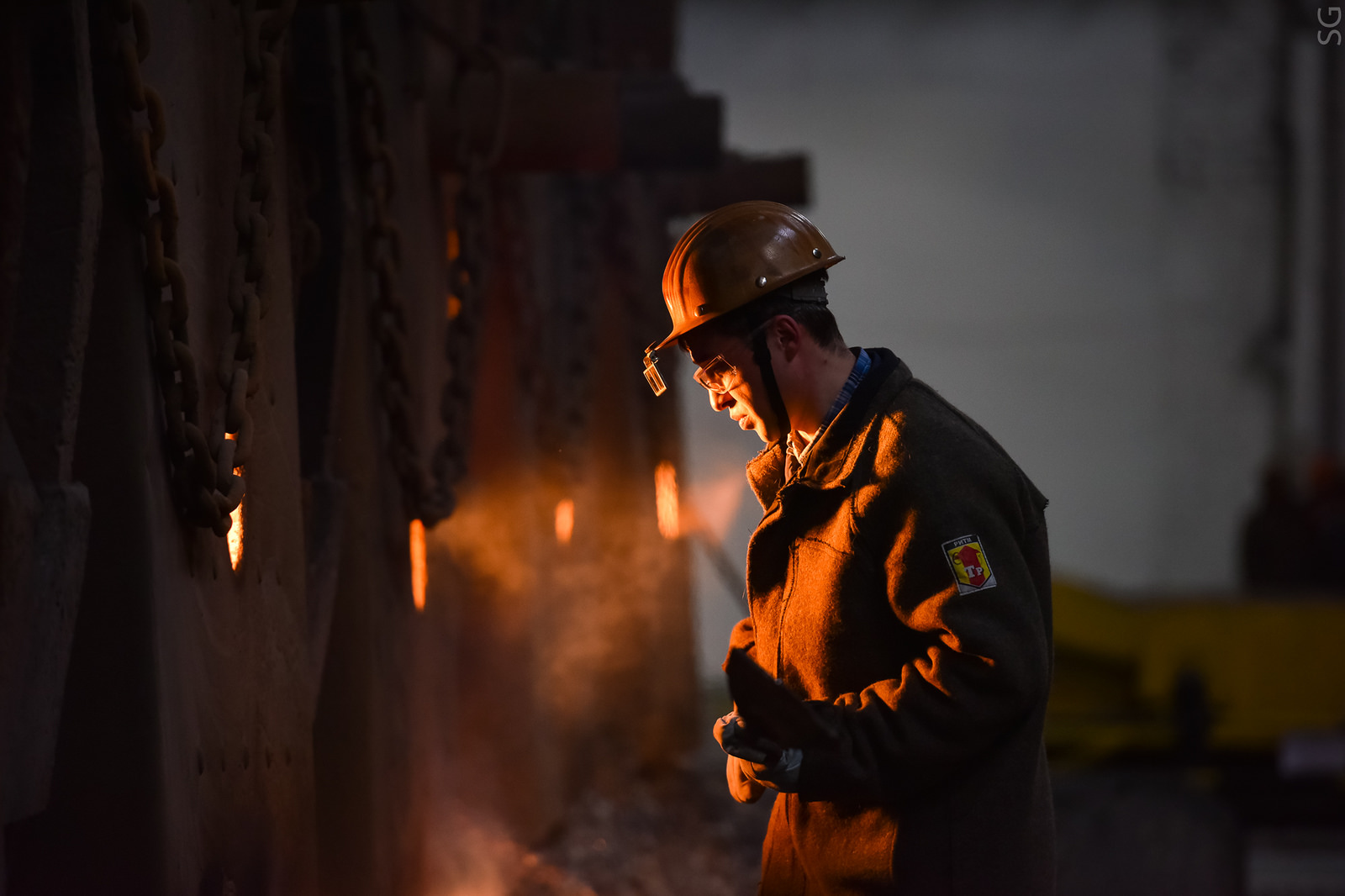 Steelworkers at work.
Steelworkers at work.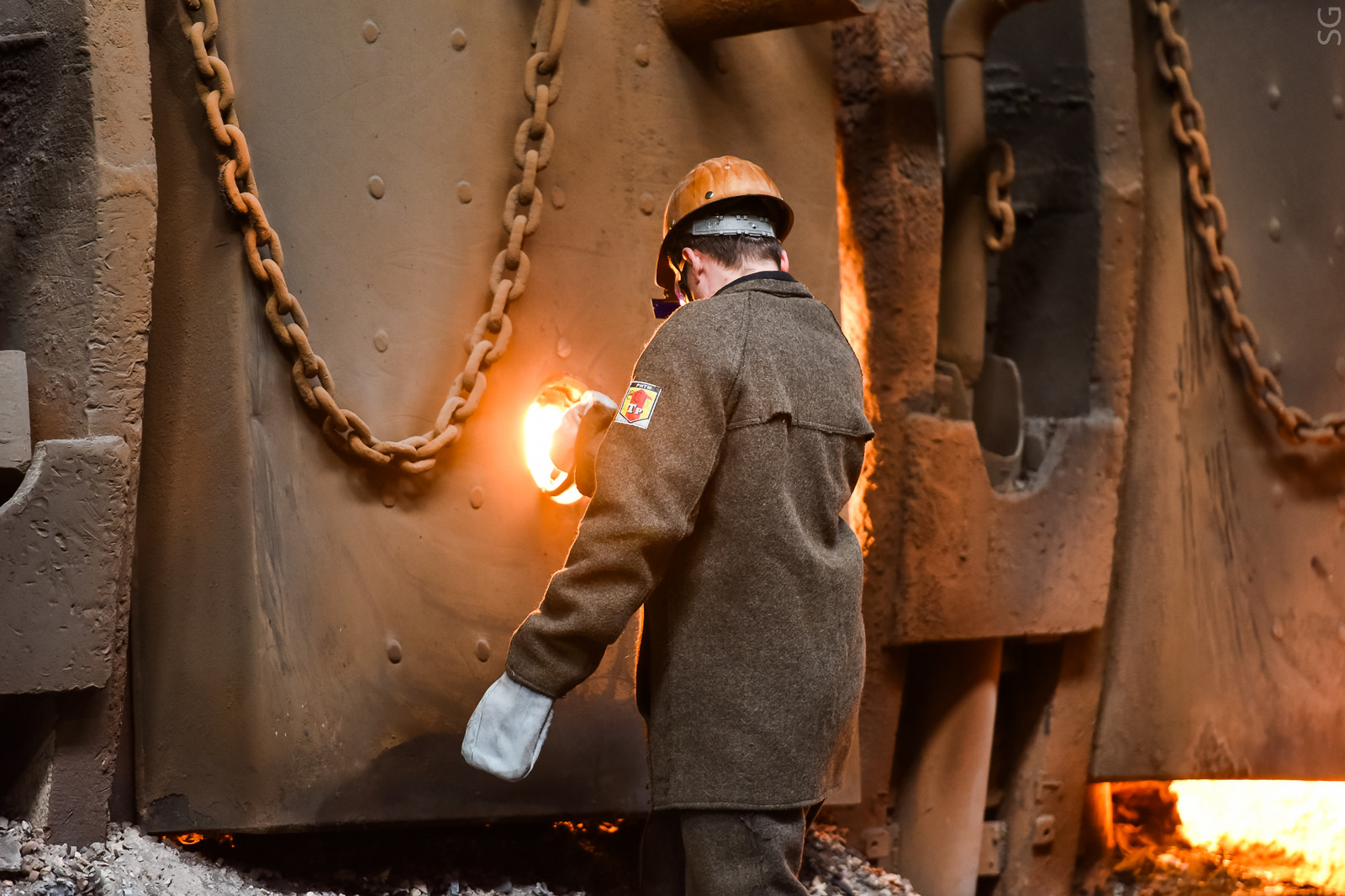 Again, steelworkers at work.
Again, steelworkers at work. Update: According to tradition, during the last smelting, the most experienced steelmaker of the workshop, Yevgeny Stepanovich Vyatin (37 years of experience on the Martin), threw his watch into the ladle with red-hot metal.
Update: According to tradition, during the last smelting, the most experienced steelmaker of the workshop, Yevgeny Stepanovich Vyatin (37 years of experience on the Martin), threw his watch into the ladle with red-hot metal. Evgeny Stepanovich gives the command to the crane operator "Raise the bucket!".
Evgeny Stepanovich gives the command to the crane operator "Raise the bucket!".The work of steelworkers is supervised by students of NUST “MISiS”, who study at the target stream of OMK bachelor’s degree. They specially came to the factory to get acquainted with classical and modern technologies of production and processing of steel.
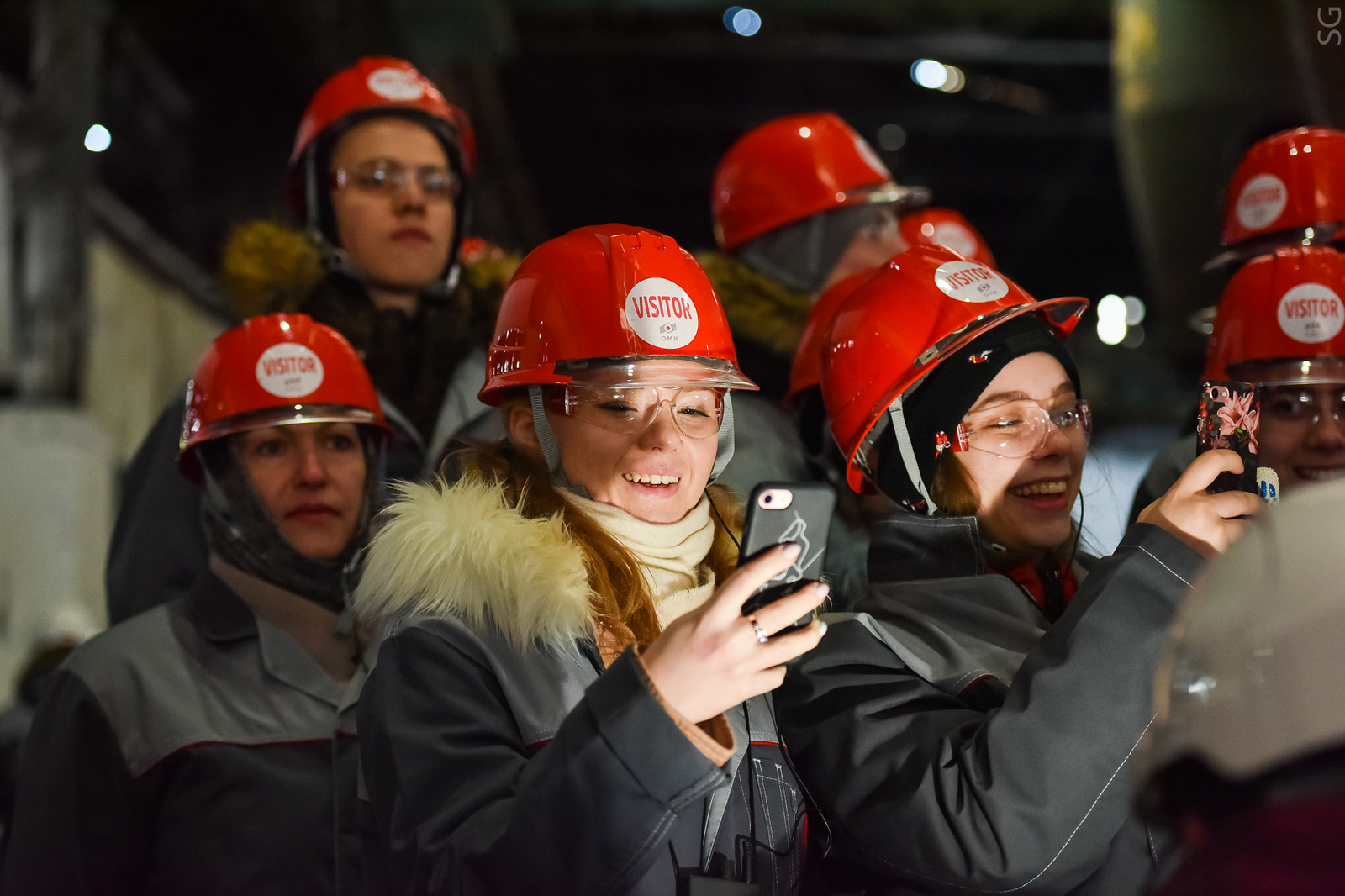 Students NITU "MISIS" on excursions.
Students NITU "MISIS" on excursions. Students NITU "MISIS" on excursions.
Students NITU "MISIS" on excursions.The picture that the students saw fascinated everyone.
 The release of steel from the furnace.
The release of steel from the furnace.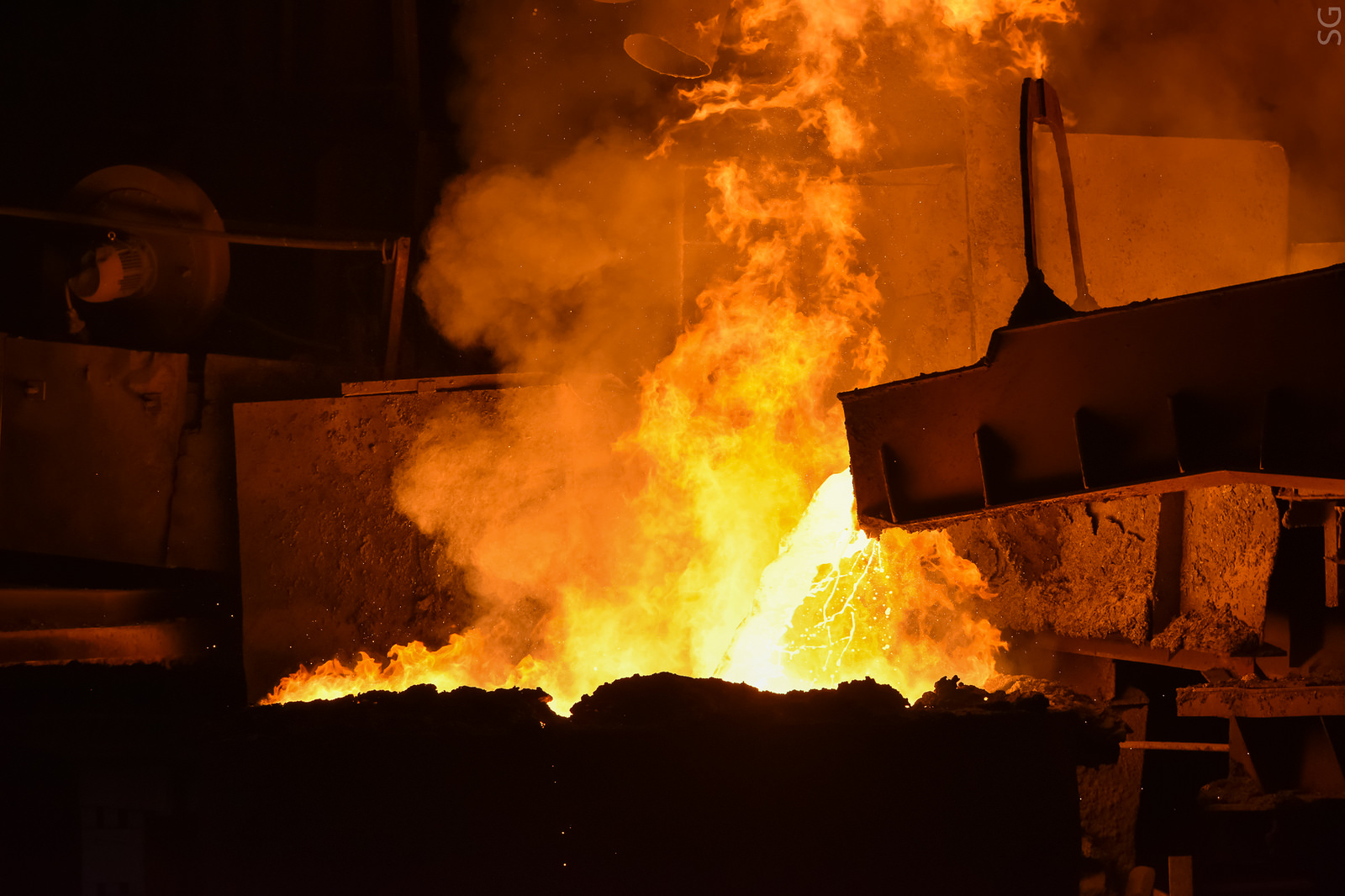 The release of steel from the furnace.
The release of steel from the furnace.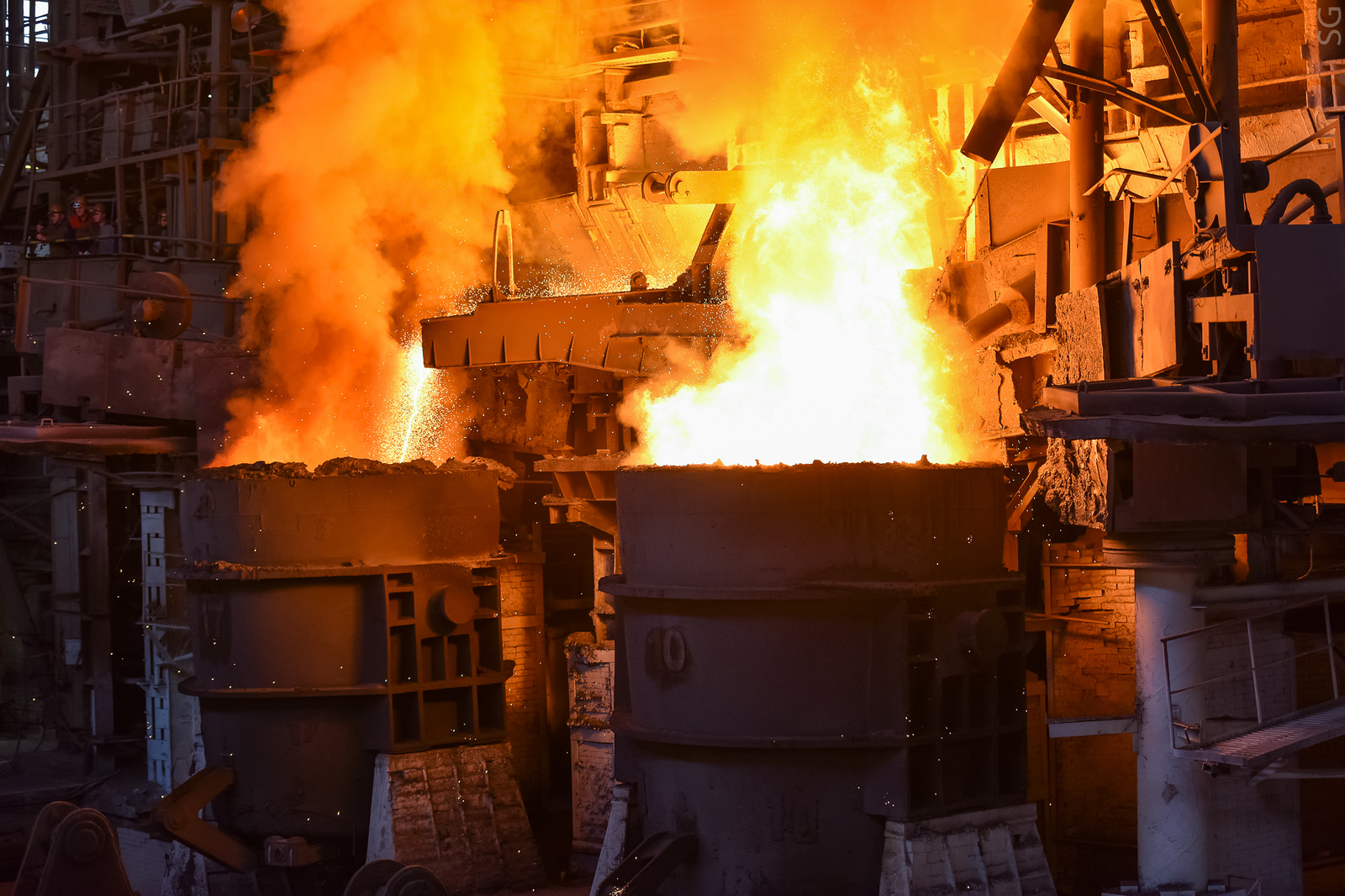 The release of steel from the furnace. Standard bucket capacity is 100-150 tons. Furnaces - 280-300 tons. Therefore, the release of steel is two buckets. Since the outlet in the furnace is at the bottom, the steel in the first ladle is considered to be of better quality. The rest of the steel and slag are drained into the second ladle.
The release of steel from the furnace. Standard bucket capacity is 100-150 tons. Furnaces - 280-300 tons. Therefore, the release of steel is two buckets. Since the outlet in the furnace is at the bottom, the steel in the first ladle is considered to be of better quality. The rest of the steel and slag are drained into the second ladle.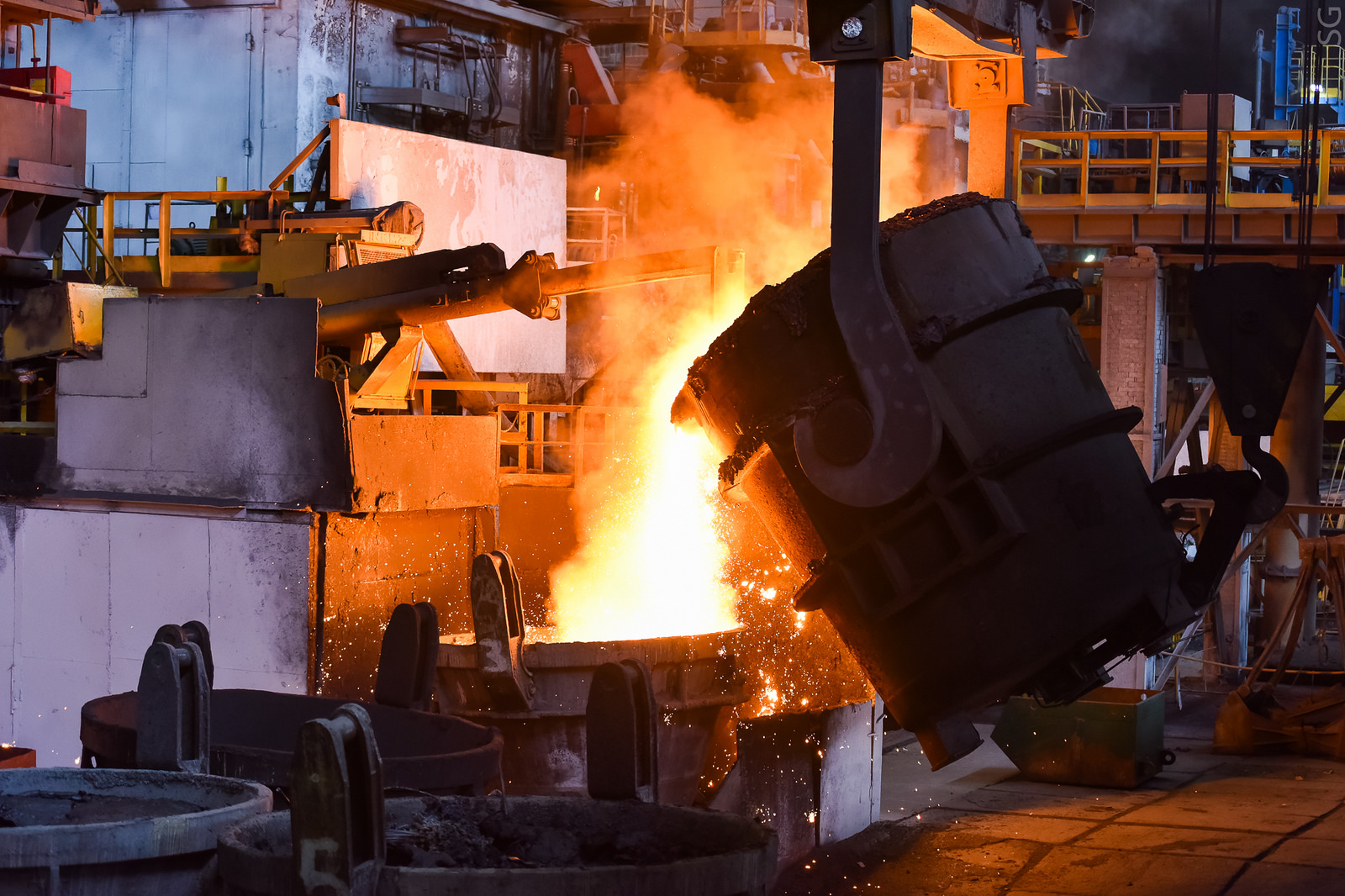 Removing slag from the second bucket. Visible is the "chopper", which rakes the slag from the metal surface into the slag-receiving bucket.
Removing slag from the second bucket. Visible is the "chopper", which rakes the slag from the metal surface into the slag-receiving bucket.Last melt completed.
 Both buckets on the out-of-furnace treatment plant (most likely, this is a ladle furnace, on which steel is adjusted to the required grade).
Both buckets on the out-of-furnace treatment plant (most likely, this is a ladle furnace, on which steel is adjusted to the required grade).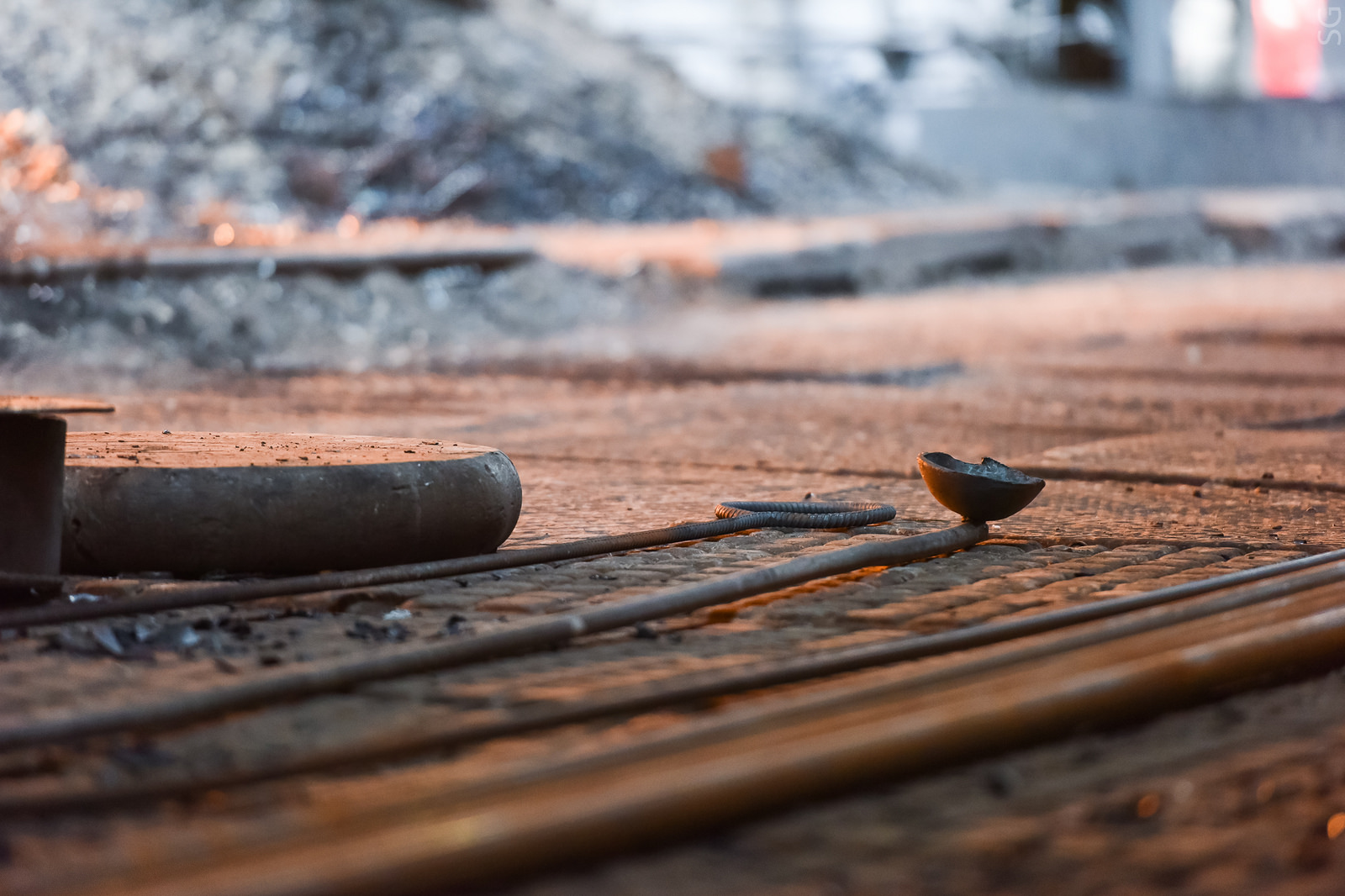 Steelwork tools.
Steelwork tools.Shop stopped. What to do with it remains to be decided.
 General view of the shop.
General view of the shop.Bonus: on the territory of the Vyksa Steel Works there is one of the 20 surviving Shukhov towers, built by engineer VG Shukhov back in 1898.
 PS
PS If you are eager to look at the work of the open-hearth furnace, there is still such a possibility in Russia. At the Guryev Metallurgical Plant there are two furnaces with a total output of 210 thousand tons, and at the Metallurgical Plant Petrostal there are 4 furnaces, giving a total of 170 to 240 thousand tons of steel. And when these ones go out, among the countries using steelmaking technology using open-hearth furnaces, only Ukraine and India will remain.
Photos taken by
Sergey Gnuskov .